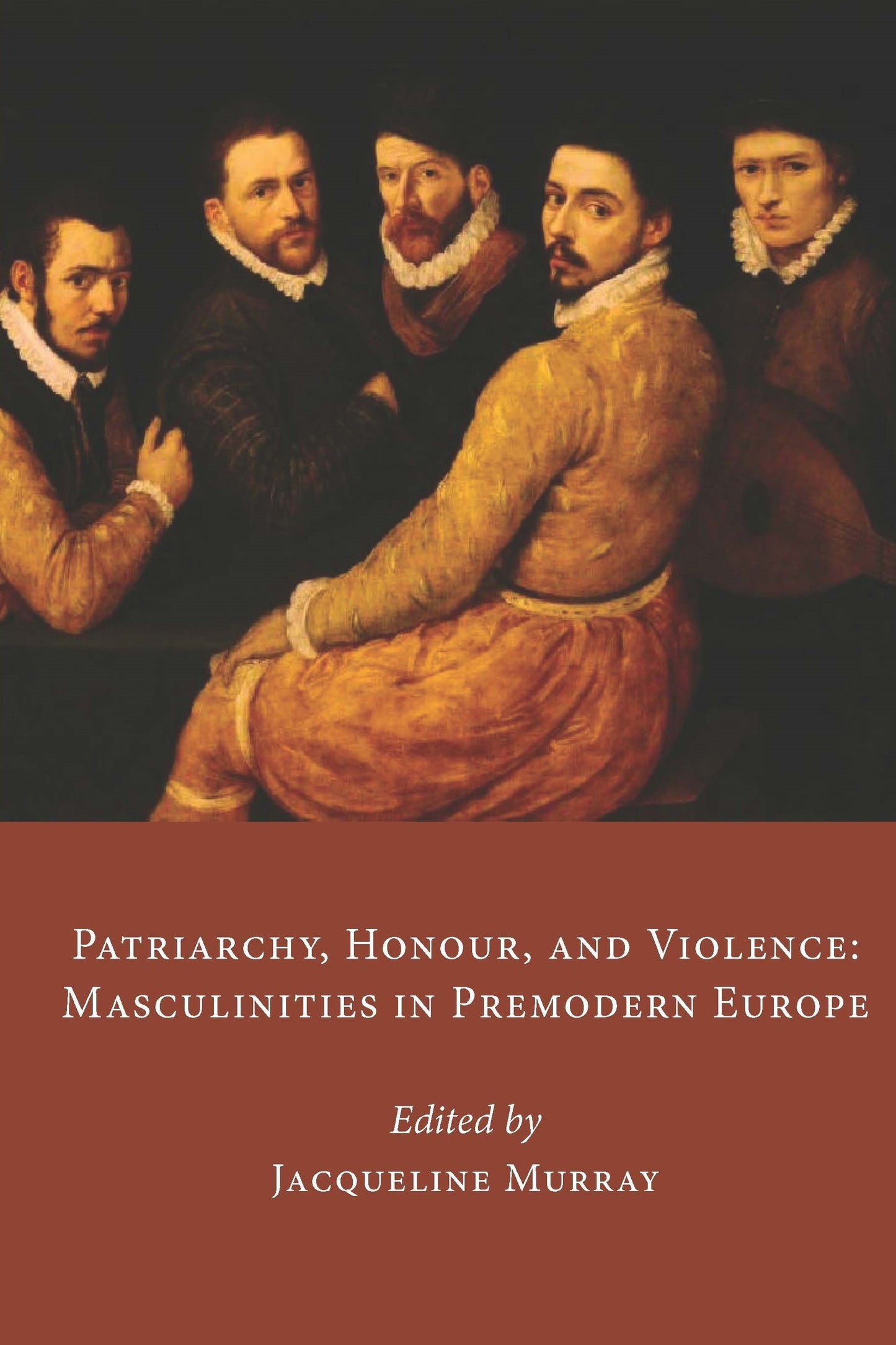Patriarchy, Honour, and Violence: Masculinities in Premodern Europe
Edited by Jacqueline Murray ~ ES57
Description
Masculinities are at once heterogeneous and multivalent, manifested according to cultural milieu and social status. In the premodern world, hegemonic masculinity served to reinforce patriarchal social structure and men’s domination of women and subordinate men. It also led to competition and violence among men as they strived to attain and retain their individual position within a dynamic masculine hierarchy. Masculinity’s social meaning relies on men recognizing masculinity in other men, which in turn leads to honour, as the ethical foundation of masculinity. In the premodern world, patriarchy, honour, and violence were inextricable from masculinity. The essays in this volume interweave varied historical sources, social contexts, interpretative frames, and scholarly interpretations to provide a series of overlapping, reinforcing, and occasionally contradictory perspectives on premodern men and their quest for masculine identity and honour. They explore how in premodern Europe masculinity was demonstrated and contested by men across different social, political, geographic, and religious contexts, revealing how the shared but contentious values of patriarchy and honour were often reinforced or demonstrated through violence. In doing so, they provide a rich foundation for understanding the complexities of premodern masculinities.
Jacqueline Murray is Professor of History at the University of Guelph. She has published widely on masculinity and male sexuality in the premodern world, most recently the volume The Male Body and Social Masculinity in Premodern Europe (2022). She is currently completing a monograph examining the ideological and social contexts of male embodiment in the Middle Ages.
358 pp.
ISBN: 978-0-77271-144-1
Published: 2022
Contents
Jacqueline Murray, Introduction “Premodern Hegemonic Masculinity”
Tensions in Hegemonic Masculinity
1. Shannon McSheffrey “The Legend of John Baptist Grimaldi: Sexual Comportment and Masculine Styles in Early Tudor London”
2. Aaron Miedema “The Sand Pot: The Politics of the uomo da bene in Rural Latium”
3. Mireille J. Pardon “Necessary Killing: Crime, Honour, and Masculinity in Late Medieval Bruges and Ghent”
4. Isabel Harvey “Fights, Duels, and Patria Potestas: Controlling Virility in the Papal States”
Men in Groups: Homosociality
5. Emilio Caputo and Dana Wessell Lightfoot “A Pragmatic Masculinity and The Family in The Spanish Military Orders, 1085–1250”
6. Savannah Pine “Homosociality and Knightly Ritual Brotherhood in the Late Medieval Latin West”
7. Andrew E. Larsen “Student Violence and Masculinity at the University of Oxford”
8. Derek Neal “Familiar Acquaintances: Men’s Talk, Wills, Property, and (Clergy)men’s Talk in 1550s England”
9. John M. Hunt “Counterfeit Gentlemen: Gambling, Cheating, and Sociability in Early Modern Rome”
Patriarchy, Honour, and Lineage
10. Jennifer Mara DeSilva “The Roman Clerical Household as a Site for Provision to Office, Respectability, and Clerical Masculinity”
11. Erin J. Campbell “At Home with Men: Place and the Making of Masculinities in the Early Modern Domestic Interior”
12. Yael Manes “Italian Renaissance Artists as Progenitors and Founders of Artistic Lineages”
13. Maria F. Maurer “A Bastard History: Illegitimacy and Masculinity at the Italian Court”
Praise
This rich collection greatly enhances our understanding of pre-modern masculinity, presenting an impressive range of nuanced and fascinating case studies. The contributors shed invaluable light on the complex patriarchal ideals by which men were expected to live and the impact which these ideals had on interactions between men within particular social or occupational groups. Instances both of violent conflict and affective support between men are engagingly explored.
Katherine J. Lewis, University of Huddersfield
A fascinating collection of innovative research on premodern European masculinities. In these pages male merchants, aristocrats, priests, soldiers, students, and artists from the twelfth to the seventeenth century do what men have always done: fight for their honour, boast of their virility, have sex licitly or illicitly, promote their own interests and those of their relatives, feast, gamble, gossip, and murder.
Mathew Kuefler, San Diego State University
From card sharps, domestic abusers, and drunken louts to fathers, brothers, teachers, employers, and friends caring for their families and followers, the chapters in this book investigate the many-faceted expectations of masculinity in medieval and early modern Europe. The work demonstrates both some long-term commonalities and some striking differences in the ways different geographical, chronological, and socioeconomic subcultures constructed masculinities.
Ruth Mazo Karras, Trinity College Dublin
Couldn't load pickup availability


